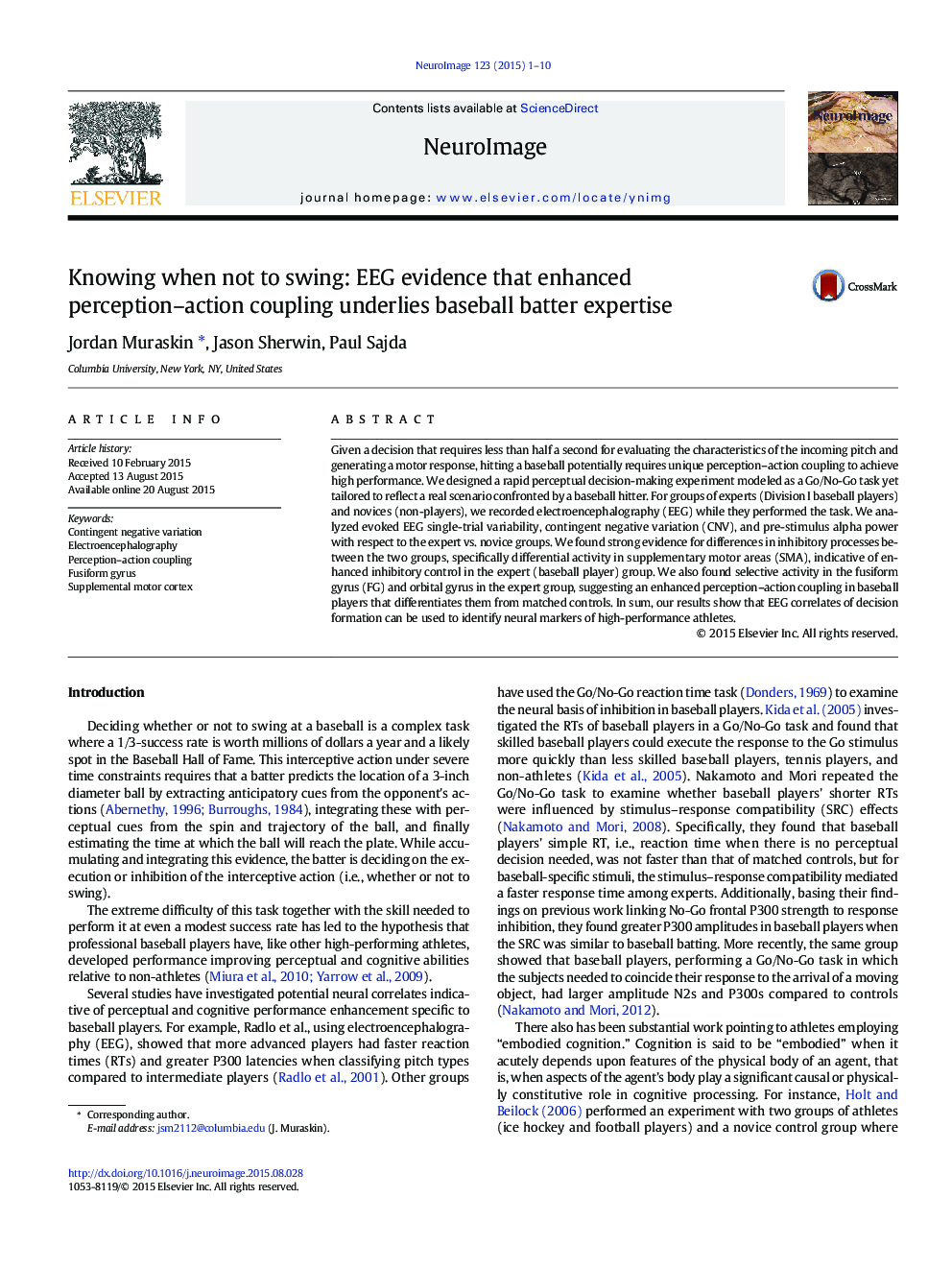| Article ID | Journal | Published Year | Pages | File Type |
|---|---|---|---|---|
| 6024718 | NeuroImage | 2015 | 10 Pages |
Abstract
Given a decision that requires less than half a second for evaluating the characteristics of the incoming pitch and generating a motor response, hitting a baseball potentially requires unique perception-action coupling to achieve high performance. We designed a rapid perceptual decision-making experiment modeled as a Go/No-Go task yet tailored to reflect a real scenario confronted by a baseball hitter. For groups of experts (Division I baseball players) and novices (non-players), we recorded electroencephalography (EEG) while they performed the task. We analyzed evoked EEG single-trial variability, contingent negative variation (CNV), and pre-stimulus alpha power with respect to the expert vs. novice groups. We found strong evidence for differences in inhibitory processes between the two groups, specifically differential activity in supplementary motor areas (SMA), indicative of enhanced inhibitory control in the expert (baseball player) group. We also found selective activity in the fusiform gyrus (FG) and orbital gyrus in the expert group, suggesting an enhanced perception-action coupling in baseball players that differentiates them from matched controls. In sum, our results show that EEG correlates of decision formation can be used to identify neural markers of high-performance athletes.
Keywords
Related Topics
Life Sciences
Neuroscience
Cognitive Neuroscience
Authors
Jordan Muraskin, Jason Sherwin, Paul Sajda,
